Disease and weather shakes up wheat variety choices
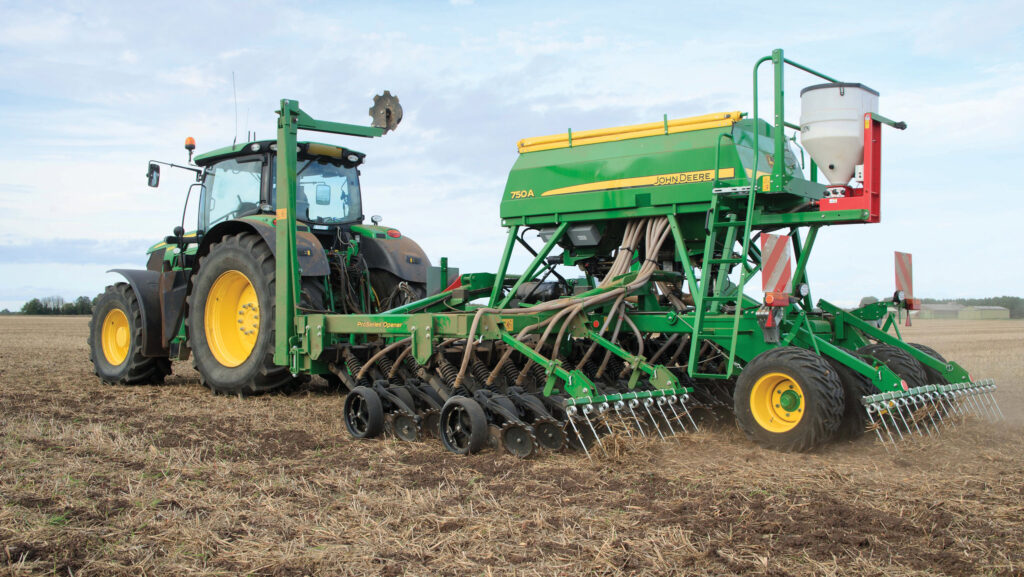 © Tim Scrivener
© Tim Scrivener The savage 2024 growing season is dividing opinion about appropriate winter wheat variety choices for harvest 2025, with commentators recognising reasons to be concerned about some of the most popular varieties.
Just six varieties represent two-thirds of the UK wheat area – and with at least three of those coming under extreme pressure from disease – there’s more interest in what’s coming in the next few years than there is for the current contenders in certain market sectors.
Up to 17 varieties make up the remaining third of the country’s wheat area and growers should be thinking about how to spread risk and bring in some genetic diversity after such a high disease pressure season, says Andrew Bourne, seed manager at Dennes in Kent.
See also: North Yorks grower warms to feed winter wheat Beowulf
“We will see some of the preferred Group 1 and Group 2 varieties taking a knock this year,” he predicts.
“Deciding whether to stick with a variety or not when there aren’t suitable replacements is tricky.
“We’ve yet to see how variety ratings have been affected, but we know that some of them are going to fall.”
His area is dominated by milling wheat varieties, so the delay to Cheer’s full recommendation as a Group 1 variety is an unwelcome complication.
“We’ve been waiting for new varieties in this category for a while.”
That’s a view shared by Clare Leaman, cereal variety specialist at Niab, who says there’s room for more Group 1s.
“The relevant factor is that if they don’t bring any extra yield, then they aren’t really competitive without breadmaking approval.”
Varieties by market share (certified seed) for harvest 2024
- Dawsum – 20.3%
- Extase – 15.9%
- Champion – 9.9%
- Skyfall – 6.9%
- Crusoe – 6.6%
- Graham – 5.5%
Group 1
Agronomic issues are causing huge difficulties in the Group 1 sector and getting in the way of decision-making, agrees Duncan Durno, arable technical manager at Openfield, who notes that the balance between cost, management and risk is an issue.
“Even so, the economics are still working for milling wheats, with premiums at £50-£80/t for harvest 2025,” he says.
That is despite active brown rust in Crusoe all year and yellow rust affecting both Zyatt and Skyfall, along with septoria.
For all three, fungicide costs have been higher and sleepless nights more frequent than growers and agronomists would like.
Depending on yields at harvest, most will give Crusoe another chance, he suspects, and commit to monitoring over-winter temperatures and being vigilant.
Andrew notes that Crusoe is the preferred variety with millers and that it will be another one to two years until it can be replaced fully.
“Of course, there are concerns after this year’s brown rust battle and its area will fall back, but it may have to stay a bit longer than liked on farms that produce quality wheat.
“In our trials, we’ve seen a marked difference in brown rust control where a T0 was used and where a strobilurin was added to the T2 spray.”
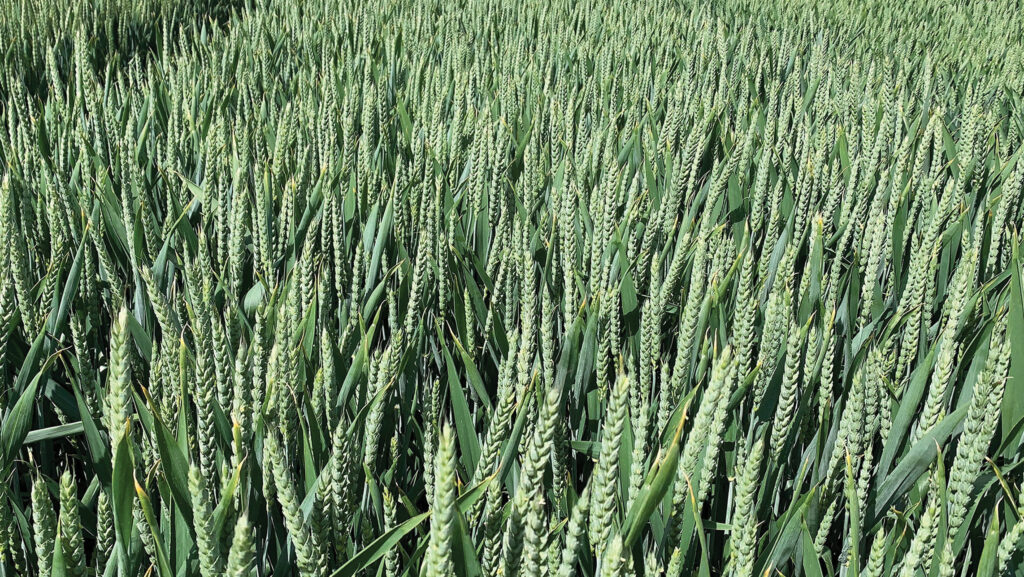
Group 1 wheat Cheer © Syngenta
The newcomer in the Group 1 sector, Cheer, did not move from provisional to fully recommended in March, with UK Flour Millers saying that more assessments are required and the final decision will come in September 2024.
While that does not give certainty to this year’s plantings or guarantee that seed will still be available, the advice from the seed trade is to “dip a toe in the water” and try a bit of Cheer.
For those who do that, independent miller Heygates will buy the variety, confirms senior executive George Mason.
“We buy milling wheat direct from farmers and have a minimum specification,” he says. “We will take any Cheer that meets our standard.”
The good news is that Cheer should be easier to manage than the other Group 1s, notes Duncan.
“We’re not raising yields with a variety like this, but it does bring better agronomics. Learning about it, even in the unlikely event that it does end up being a Group 2, won’t be a bad thing.”
Zyatt is having a better year than expected and fungicides have worked well, even though its disease ratings are low, he adds.
Potential cost of growing a Group 1 milling v feed wheat in 2025 |
||
|
|
Group 1 |
Feed wheat |
|
Seed (£/ha) |
84 |
72 |
|
Nitrogen (£/ha) |
295 |
215 |
|
Fungicide (£/ha) |
176 |
138 |
|
Plant growth regulator (£/ha) |
18 |
10 |
|
Total (£/ha) |
573 |
432 |
|
Group 1 milling costs £141/ha more. Assuming a yield of 9.5t/ha, this equates to: |
£60/t |
£45/t |
|
Note: Herbicide costs not included. Source: Ceres Rural |
||
Group 2
The Group 2 sector can be split in half when it comes to premium earning potential, reports Duncan.
“Extase and Palladium will attract good premiums and even hit the Group 1 level on occasions,” he says.
However, Extase is another variety with a less-than-certain future, say others, who highlight a greater susceptibility to yellow rust and far more septoria than its Recommended List rating of 7.4 suggests.
“Extase has broken down,” says agronomist Stan Harrison of Zantra.
“We’ve seen variation in grain yields and quality, a problem with yellow rust and a septoria rating closer to a 5 now.”
That is a view echoed by agronomists across the country, who point out that it’s the same yellow rust race that’s affecting Crusoe, although most recognise that Extase can still fill barns.
Growers will ease back on the amount of Extase they have now, predicts Andrew.
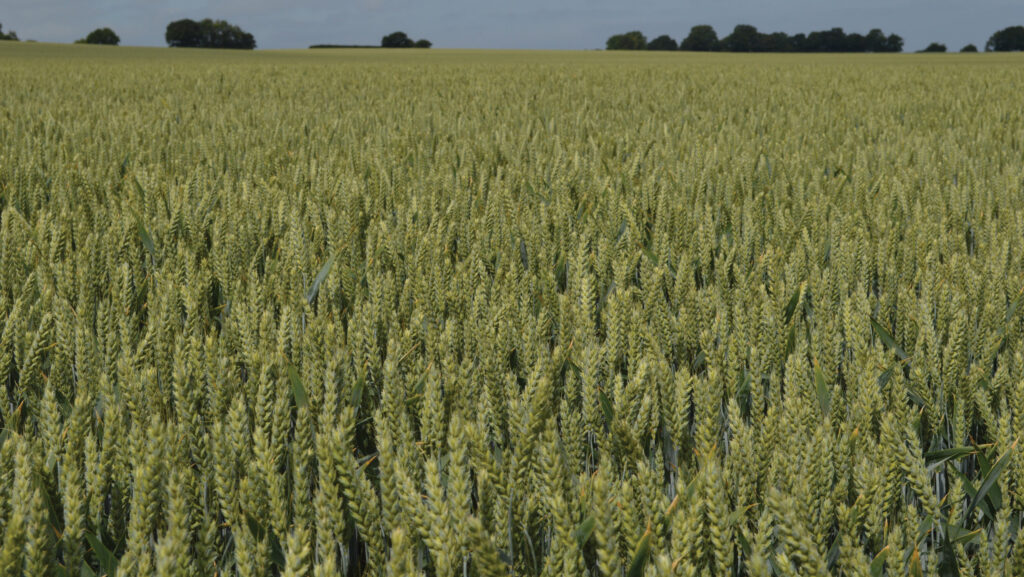
Group 2 wheat Palladium © MAG/David Jones
“It’s still getting good premiums, but there was a water absorption problem with it last year. It’s about reducing the risk that you’re exposed to.”
Palladium is different, he stresses. “It’s been very consistent and has always done well for us in Kent and the South East. It’s a good variety for lighter land.
Warburtons takes Palladium at 12.5% protein, points out Clare, who recommends that growers put varieties in priority order, as some are less risky to grow.
“If they haven’t behaved as you expected them to in terms of disease, remind yourself of the drilling date. There’s a connection between sowing date and the resistance rating.”
Another Group 2, Mayflower, is highlighted by Andrew. “It’s one of my pets and represents 10% of our seed sales.
“Its septoria rating of 8.9 has come into its own this year and it’s great on slightly lower potential sites.”
Group 3
It has been a long time coming, but the Group 3 sector now has a top-performing variety in the form of Bamford.
It’s the joint top-yielding variety on the Recommended List, with good agronomics and market flexibility as well, and comes with the hope that it will revive the ailing Group 3 sector and find feed outlets, too.
“After 15 years, at long last there’s a soft Group 3 wheat that I can recommend to growers,” says independent agronomist Patrick Stephenson.
“As with all varieties that make an immediate dent on the market, I expect we will learn a lot about it very quickly.”
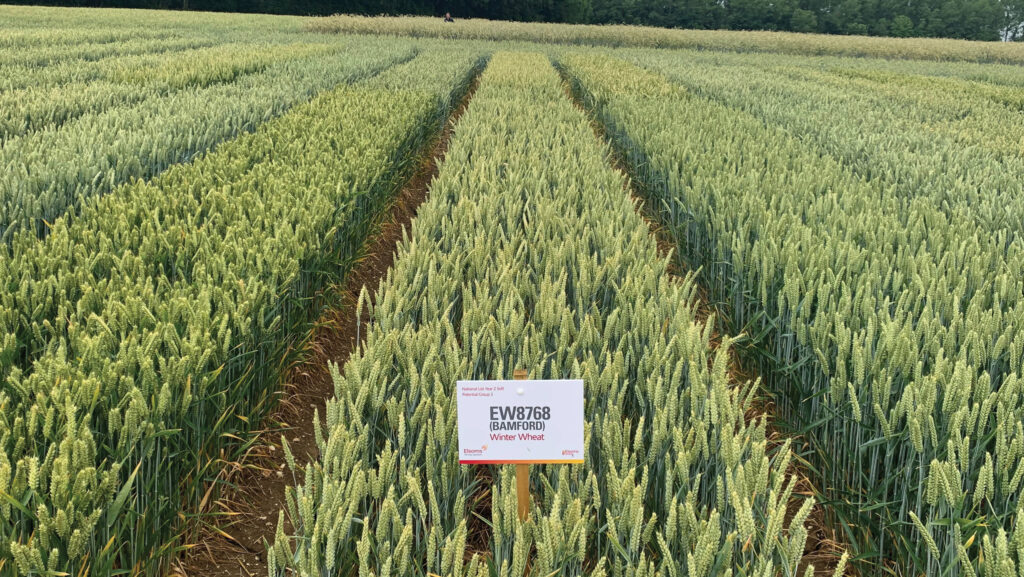
Group 3 wheat Bamford © MAG/David Jones
Duncan says that Bamford’s arrival is very welcome and cautions against drilling it too early.
A septoria rating of 6.7 has needed managing, while the absence of orange wheat blossom midge resistance does not concern him.
Bamford is one of the cleanest varieties in the Dennes/Zantra trials, confirms Andrew.
The other new Group 3, Almara, is recommended for the North, where it has given its best yields. It also has market flexibility, being suitable for biscuit, distilling and export.
Group 4
Feed wheat growers have two new choices for this autumn – a soft and a hard wheat.
The hard feed Beowulf is attracting a great deal of attention, with its list-leading yield of 106% and untreated yield of 91%.
“Beowulf is a comfort blanket,” notes Patrick. “Its parents are Gleam and Costello, both of which served us well, so there’s good reason for it to have an impact.”
Its success will most likely come at the expense of Champion and possibly Dawsum – both of which are starting to make people nervous.
“They’ve reached their peak and aren’t performing as well as they once were.”
However, Duncan says they are good partners on farm and can be differentiated by Champion being earlier to harvest and having a lower specific weight, while Dawsum’s higher grain quality can help to prop yield up.
“These are big-selling varieties in the largest market sector,” he confirms.
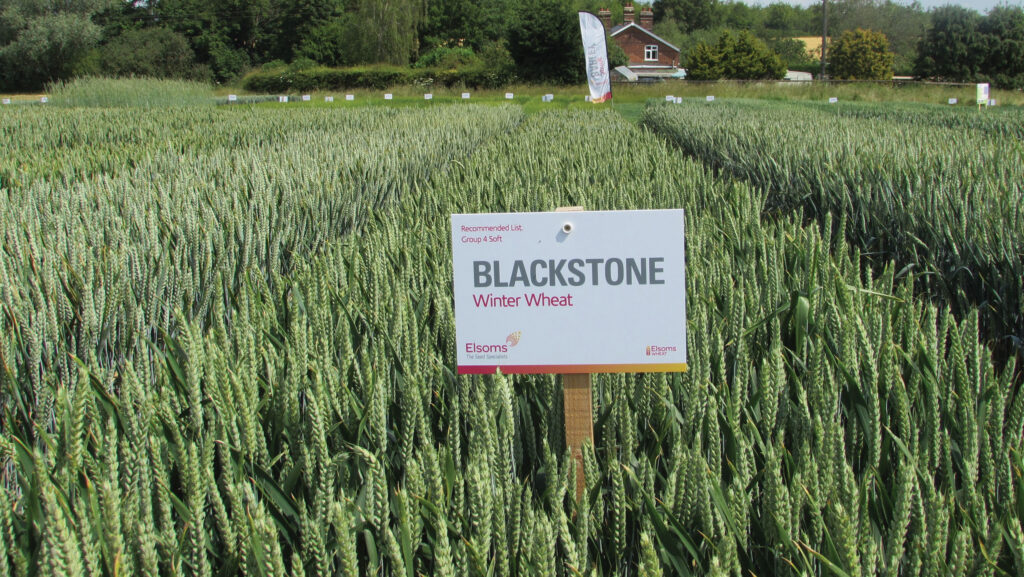
Group 4 wheat Blackstone © Elsoms
Dawsum has struggled in the South West with septoria this year, report agronomists.
Others include Graham and Gleam, both of which have found this season’s very high disease pressure a challenge.
Blackstone is the new soft Group 4 variety, with a yield of 103% and an untreated yield of 87%. While its septoria and brown rust scores are slightly behind those of Redwald, it has much stiffer straw.
Another popular choice, Skyscraper, needs a big fungicide spend now, reports Duncan.
Candidates – bumper year
The huge number of winter wheat candidates up for recommendation later this year is daunting, says Clare Leaman of Niab, but she notes that there are some that look interesting.
Of the potential breadmaking types, she picks out both Vibe and Beste from KWS, as well as Arnie, but reminds growers to wait for the steer on quality from the millers.
She also highlights Goldfinch from RAGT, as having both resistance to orange wheat blossom midge and barley yellow dwarf virus, the latter being a first in quality wheats and of interest to supply chains.
Others of interest in this category include Diamond from DSV, a Skyfall/Siskin-cross.
In the Group 3 sector, Clare’s pick at this stage is Solitaire, a high-yielding type with orange wheat blossom midge resistance, but a 5 rating for brown rust.
The hard Group 4 sector has eight candidates – with Clare picking out Mongoose, Rebellion, Scope and Memphis as ones to watch.
“Of course, harvest 2024 could change things,” she says.
“Many of the candidates have been affected by disease, especially brown rust, so waiting for another set of results will be important.”
Grower intentions
Kent
For milling wheat grower Richard Budd, variety decisions for harvest 2025 have not been too difficult.
He is sticking with Crusoe, having been able to manage brown rust this year with the help of strobilurin fungicides, and will be trying both Cheer and Goldfinch.
“These are varieties that we need to learn about,” he explains.
In addition, both Mayflower and Extase are keeping their place on the farm, with the latter not being drilled early.
Bedfordshire
Farm manager Andrew Robinson has decided to go all out for milling wheat next year, having achieved very good yields while consistently hitting 13% protein.
Having trials on the farm helps to guide his thinking, with the six top-performing varieties at Heathcote Farms in 2023 all being Group 1 and Group 2s.
More importantly, the gross margin from these was double that of feed varieties, with only Skyfall failing to live up to expectations due to the loss of its Hagberg.
“It shows how important the combination of yield and grain selling price is,” he says.
“We will be growing four milling varieties this autumn, but it has been a bit of a struggle to keep Crusoe clean.”
A milling wheat premium of £50/t minimum with no maximum for harvest 2025 will help with the additional growing costs, he adds.
Berkshire
Farm manager Rob Waterston is pleased to see both Bamford and Beowulf arrive as new feed wheat choices, although he has been less impressed with the price of seed.
Otherwise, he is in discussions with his agronomist about the future of Extase on the farm, but will be sticking with Dawsum.
“My agronomist is telling me to bin Extase now, due to its falling disease ratings, but it’s done well for us up until now. Dawsum will remain for another year.”
Buckinghamshire
Will MacLennan has been pleased with Nelson, a lower input wheat variety grown on contract for a local miller.
He also gets good yields from Extase, but now includes a T0 as standard practice on the variety and has both Palladium and Siskin in the ground.
“Due to the terrible weather, for the first time we have spring wheat Cochise growing,” he reports.
“It’s been cheaper to manage so it will be interesting to see how it does at harvest.”
